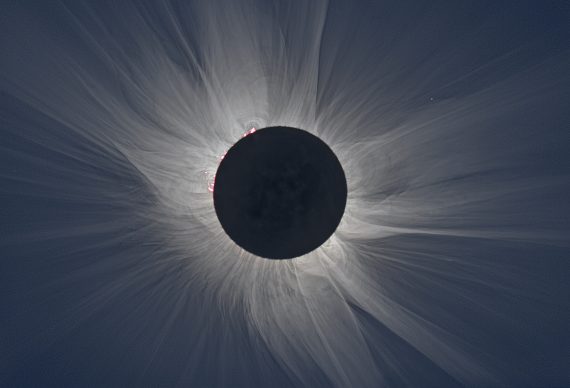On Aug. 21, America will witness an astronomical phenomenon that hasn’t been seen in the continental United States for 99 years. The moon will pass between the sun and Earth, giving rise to the Great American Eclipse – a treat for umbraphiles, or eclipse chasers, on Earth.
FIU astrophysicists Caroline Simpson, Walter Van Hamme and James Webb offer their insights on what to expect.
- The eclipse can be partial or total, depending on where you live. South Florida will see a partial eclipse when the moon will block about 78 percent of the sun, Simpson said. Anyone within the eclipse’s path of totality – a 70-mile wide band stretching from Salem, Ore. to Charleston, S.C. — will witness a total eclipse when the moon fully blocks the sun, causing daylight to turn into darkness, temperatures to drop and stars to shine in the middle of the day.
- It is predictable. In May 1715, Edmund Halley – of Halley’s Comet fame – predicted the path and timing of a solar eclipse and was off by four minutes. Today, eclipses can be predicted down to the second, a testament to the scientific method, said Van Hamme. In Miami, the eclipse will start at 1:26 p.m. with peak coverage at 2:58 p.m.
- It advances science. The sun’s corona, the outer atmosphere made up of gas and magnetic fields, is where some of the most interesting solar physics happens, including solar flares responsible for the Northern Lights. The corona is thin and hidden by the overwhelming light emanating from the sun’s surface, but it can be seen during a total solar eclipse. Studying the corona in real-time allows scientists to improve theories for better understanding and predicting solar phenomena, according to Webb.
- Looking at it can be dangerous. This is especially true in South Florida and other places outside the path of totality because parts of the sun will still be visible and its UV rays can damage the eyes. The astrophysicists advise to never look directly at the sun without protection. Regular sunglasses will not protect against eye damage. Instead, use special-purpose solar filters, also known as “eclipse glasses.” For a list of reputable vendors from NASA, click here.
- It’s bad for a camera and a telescope, too. Aiming a camera or a telescope right at the sun can permanently damage the device. Telescopes require proper solar-observing filters. Webb also recommends placing a solar photography filter in front of a camera lens before snapping a shot of the eclipse.







